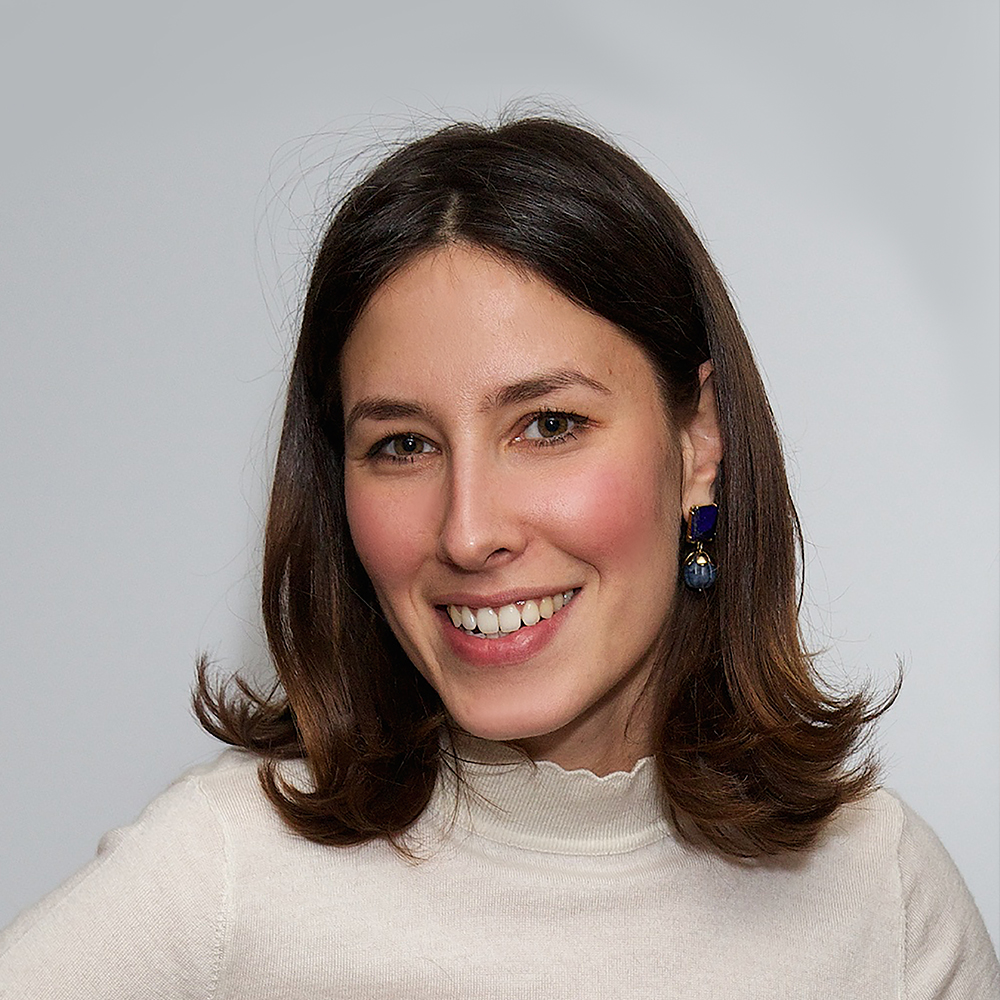
June 2018
Lisa Levinson
Lisa Levinson is a strategic project manager for the Diamond Producers Association. She started out working with rough diamonds in South Africa, moving to De Beers Group in London and Botswana, and launching Forevermark in Britain. With a strong belief that diamonds matter to communities, she feels a responsibility to share their stories.
Lisa was also the brilliant host of Diamond Day in April.
IN CONVERSATION
Tessa Packard [TP]: Let’s start with your own secrets Lisa! How many diamonds have you dropped/stones have you lost in all the years you have worked in the diamond industry?
Lisa Levinson [LL]: On my first day at De Beers I had a tutorial with a very knowledgeable gentleman. He talked me through the realm of diamonds in De Beers’ diamond information office, which was a small room full of diamonds on the second floor of the Charterhouse Street building. During those first couple of hours, I saw diamonds of every colour and shape. One of the items in the room was a large yellowish octahedron shaped stone.
The relaxed way in which he handed me the stone made me believe it was a replica; I started playing with it. The tutorial continued whilst I was holding the stone. More than half-an-hour later I accidentally dropped the stone. After I had recovered the stone from across the room, my tutor asked me with a bemused smile, “what do you believe is the value of the stone?”. That’s when I learnt that I had dropped a $5 million rough diamond on the first day at my new job.
Seven years later, now I’m at a new job, I still haven’t dropped another diamond.
[TP]: What would you say are some of the biggest myths or misconceptions about diamonds?
[LL]: There is a widespread belief that diamonds are not really rare, but the opposite is true. Diamonds are much rarer than people believe, and their value will increase over the coming years. There is an ever-increasing consumer demand for diamonds coupled with a swiftly diminishing supply; the two cornerstones for a surge in value.
Walking down Bond Street and seeing two matching 50 carat flawless diamonds, it’s easy to feel like there must be so many of those diamonds recovered each year. The thing is that these two are the 50 carat flawless diamonds recovered this year.
Imagine holding two basketballs, one in each palm of your hands. Those two basketballs can hold all the polished diamond recovered each year that are larger than 1 carat in size. The rarity is almost exponential to the size, the volume of all the polished diamonds larger than 2 carat in size is significantly less than one basketball.
[TP]: Why are diamonds so expensive? Are diamonds a good investment?
[LL]: Diamonds are valued because of their beauty and rarity. Throughout the ages, diamonds have been used to make the intangible tangible. The exceptional physical properties of diamonds, that express themselves through beauty and strength, holds universal human appeal. I believe that nowadays more than ever, diamonds are a celebration of the real connections we chose to make. The strong emotional value translates into a financial value. Diamonds have steadily held their value and since there hasn’t been a major diamond deposit discovered since the millennium, we are looking at seemingly very attractive investments.
[TP]: Is there a diamond monopoly?
[LL]: The diamond sector has transitioned through major changes over the past two decades. The mining and sales of rough diamonds have been spread to a larger number of companies. There are now seven companies that represent around 75% of the world production of rough diamonds. In diamond jewellery retail, there are signs that the opposite development is taking place. It’s following the same trend as we can see on the British high street, fewer brands have a greater presence and there are more online sales. I’ve got a feeling that we will see great changes in how we purchase our diamonds, it will be more emotionally intimate and better reflecting of how special the experience is when you buy a diamond jewellery.
[TP]: What would you say is the greatest global crisis affecting the diamond industry today?
[LL]: We are going through a transitional phase where synthetic diamonds have recently entered into the jewellery market and haven’t yet found their space. It’s two distinctly different products with very different value propositions, that can be easily separated with verification instruments. Diamonds and synthetic diamonds will happily coexist next to each other, but at the moment the lack of stringent marketing guidelines, have allowed for confusion among consumers. I believe that in the coming years we will see the two products take distinctively separate paths; one leading into fine jewellery and the other into fashion jewellery.
[TP]: What diamonds would you actually buy for yourself in terms of investment or personal use? Which one of the 4Cs is most important in your opinion?
[LL]: There’s a saying that you don’t choose the diamond, the diamond chooses you. Cheesiness aside, every diamond is unique, they are like snowflakes, each have their own distinctiveness. I like the ones that are warmer in colour, they have a soft brilliance when set into gold jewellery.
There is a change in how we view diamonds and value their characteristics. Inclusions are not flaws, they are small time capsules that give researchers great insight to how our planet was formed. They are the personality of your diamond and they tell stories of great scientific value. I don’t see clarity as a scale, you choose the diamond with the most appealing story.
The cut reveals the intrinsic beauty of a diamond. Cutting and polishing a diamond is a mixture of artistry, craftsmanship and technology. There are mathematical formulas for how the diamond should be proportioned to best reflect, refract and disperse light. It takes two years to learn how to cut the simplest of diamonds, and it takes two years to cut the largest of diamonds. Nine out of ten diamonds are cut in Surat, India, where more than one million people are estimated to make their livelihood from the diamond industry. The positive contributions diamonds have made to India, and vice versa, are quite something; and that’s an additional reason to why I believe cut is the most important of the 4Cs.
[TP]: What has been the greatest diamond robbery recorded? And how often do stones actually go missing in the diamond mines or sorting offices?
[LL]: One of the goriest diamond thefts was a 410 carat diamond discovered in the Kollur mine in India in 1698. The discovery was made by a slave, who cut open his leg and hid the diamond inside the wound. He was later killed by a British sea captain who sold the diamond to an Indian merchant and then killed himself. This legend is very hard to verify, but the diamond, named the Regent diamond, is on display at the Louvre in Paris.
Three hundred years later, the advancement in technology has driven a lot of positive change for diamond companies. Through more sophisticated IT systems diamonds can now be tracked and traced throughout its entire journey. This makes it possible for diamond companies to guarantee the integrity of their pipeline. This also makes it easier to prevent theft.
[TP]: Is there one legendary story that everyone talks about in the industry – for example a record breaking stone sold at auction that was once thought to be a fake? Or a stone sold for millions that turned out to be a fake? Are their famous stories of industry conspiracy?
[LL]: I’ve just been recommended to read ‘Flawless: Inside the Largest Diamond Heist in History’ by Greg Campbell and Scott Andrew Selby, which is apparently one of the most incredible heists in history. It’s not about fake diamonds, but apparently the story seems “fake”. It’s an unbelievable story about a real robbery of real diamonds that took place in 2003 in Antwerp of over $100 million.
[TP]: How do I choose which mine/country/company to purchase diamonds from? Is there a “most ethical” diamond?
[LL]: The vast majority of diamonds are mined by large international corporations that comply with global best practises. Since I’ve started working with diamonds I’ve read hundreds of their financial reports and social responsibility reports to learn where the funding and investment goes. To me it’s very clear, diamonds contribute greatly to the communities in which they are mined, cut and polished. Diamonds create emotional value for the consumers and societal value for the producers.
ON THE SPOT
Town or Countryside? I love townhouse gardens and green hills in the city.
Favourite city? London, it’s got so much diversity. Someone once told me that life is best lived at the extremes; which would make London the best place to live. I must admit I prefer the calm places in London the most, such as Hampstead Heath, I guess that’s where I find my balance.
Your perfect dinner guest, dead or alive? Dag Hammarskjöld, the second Secretary General of the United Nations. He seems to have been such wise philosopher and statesman
If you could time travel to any era it would be…? Lake Tanganyika in 1871 – I’ve got a soft spot the history of great explorers, Stanley meeting Livingstone would have been an amazing one.
The best meal you’ve ever eaten is? My grandmother took us to her small hometown in northern Sweden where her cousin made us salmon pudding, with fresh salmon, newly harvested potatoes and unpasteurised cream from the local farm.
The one essential you can’t leave home without? Notebook and pen, writing helps me process the world.
Pet hate? Vindictiveness is awful
Biggest extravagance? Hot baths with lavender oil
Favourite book? The last book I read, the Age of Innocence by Edith Wharton, was very good.
What would your gravestone read? Some things are very dead – it’s a statement by my father reflecting on the importance of accepting life for what it really is
FIND OUT MORE
Instagram @lisalevinson

